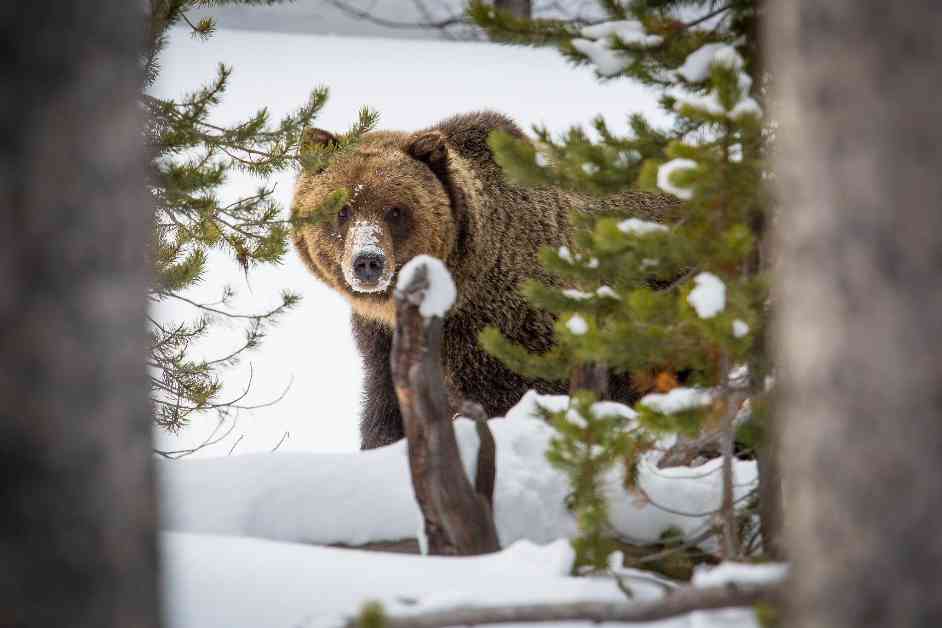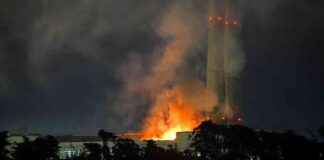In the picturesque landscape surrounding Grand Teton National Park, a beloved grizzly bear, known as Grizzly 399, roamed for over 25 years. Her presence captivated visitors and wildlife enthusiasts, offering a glimpse into the life of one of the most revered mammals in the United States. Tragically, Grizzly 399 met her end on a fateful night in October, struck by a car near Jackson, Wyoming. The news of her passing sent shockwaves through the local community and park staff, who had grown accustomed to her yearly appearances with her cubs, almost like a tradition.
Grizzly 399’s legacy extended far beyond her own lifespan, as she left behind a remarkable lineage of at least 18 offspring. Wildlife biologist Justin Schwabedissen, from the National Park Service in Grand Teton, attested to her profound impact on millions of people, inspiring awe and admiration among those who encountered her. Her story, though tragic, sheds light on the complex relationship between humans and grizzly bears, a species that has long been a subject of controversy and conservation efforts in the United States.
Controversy Surrounding Grizzly Bears
The debate over the status of grizzly bears reached a critical juncture when the U.S. Fish and Wildlife Service (USFWS) decided to maintain their classification as a threatened species under the Endangered Species Act (ESA). This decision came after petitions from Idaho, Montana, and Wyoming to delist the bears, citing the need for more state-level control over their management. The senators from these states introduced a bill seeking to remove grizzlies from ESA protections, sparking a contentious discussion about the future of these iconic animals.
Grizzlies in the Yellowstone ecosystem have experienced a remarkable recovery, expanding their range and population numbers significantly in recent years. However, this success has also led to a rise in fatal encounters with humans, raising concerns about the coexistence of bears and people in shared habitats. The Interagency Grizzly Bear Study Team reported that a significant number of grizzly deaths in the Yellowstone area were attributed to human causes, highlighting the ongoing challenges faced by these animals despite their apparent recovery.
The Path to Conservation and Delisting
The USFWS’ decision to maintain grizzlies as a threatened species under the ESA was met with mixed reactions from state officials and conservationists. While some expressed frustration over the perceived lack of progress in grizzly management, others emphasized the need for continued protection to ensure the long-term survival of these bears. Martha Williams, the former director of the USFWS, highlighted the importance of a collaborative approach to grizzly bear conservation, emphasizing the role of federal and state agencies in facilitating recovery and eventual delisting.
The delicate balance between conservation efforts and political dynamics underscores the complexity of managing grizzly bear populations in the modern era. As state legislators push for greater control over bear management, concerns arise about the potential consequences of shifting responsibilities from federal to state authorities. The fate of grizzlies hangs in the balance, as competing interests and conflicting priorities shape the future of these majestic creatures in the wild.
In the wake of Grizzly 399’s untimely demise, the legacy of these iconic bears remains intertwined with human actions and policy decisions. The ongoing debate over their status under the ESA reflects a broader struggle to reconcile conservation goals with political realities in a changing landscape. As wildlife advocates, scientists, and policymakers grapple with the challenges of protecting grizzly bears, the need for collaboration and informed decision-making becomes increasingly urgent. The fate of these magnificent animals, like Grizzly 399 and her cubs, hinges on the delicate balance between human interests and wildlife conservation in the American West.














